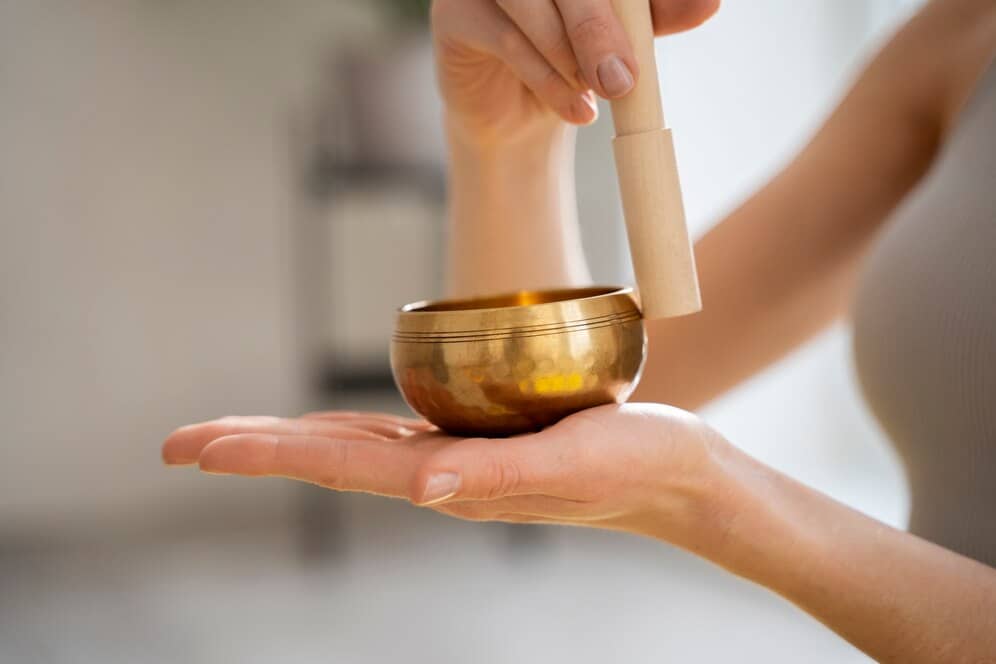
Sound healing is an old practice that has been used to reconcile and restore the body and mind through sound frequencies. It is now being adopted as a holistic self-care technique. This article examines the concept of performing sound healing on oneself, and its efficacy, and provides advice for those who wish to begin this journey of self-recovery and personal development.
What would be a very good starting point on the self-care sound-healing journey?
The first step in starting a self-care sound healing journey is setting a clear intention. This involves identifying personal goals and what you hope to achieve with sound healing. Establishing a comfortable, distraction-free space is also important to enhance relaxation and focus during sessions.
Setting an intention for sound healing focuses the mind and puts all energies toward personal ends. Begin by reflecting on the goal: maybe to be free from stress, balance your emotional nature, or experience spiritual growth. Once this is set, a proper area or space must be allocated solely for sound healing.
One should have a space free from distractions and clutter since this puts the mind in a state of tranquility and concentration. Set up a cozy atmosphere by using candles and comfortable seating. Dim the lights, and you are ready to more effectively harness the benefits of sound healing by incorporating it into your self-care routine.

How does bringing sound healing into the home help support mental well-being?
Sound healing can support mental well-being at home by reducing stress and anxiety. Regular practice helps balance emotions and promotes relaxation. Using tools like singing bowls or tuning forks enhances the experience, allowing individuals to focus on breath and mindfulness for a deeper sense of peace.
Sound healing works well for mental well-being if practiced at home. These soothing frequencies produced by instruments like singing bowls and tuning forks reduce cortisol levels, stress, and anxiety. This soothes the nervous system and makes a person relaxed in thought.
The regularity of this practice takes a person towards emotional balance, and hence, he/she can handle their mental health very easily. Such a daily or weekly routine for sound healing could aid in setting up a space to be quiet and contemplative, helpful for both mental clarity and emotional balance.
What tools are important to practice sound healing on yourself?
Essential tools for practicing sound healing yourself include singing bowls, tuning forks, and chimes. These instruments produce soothing frequencies that promote relaxation and balance. High-quality audio recordings can also be effective for those without physical instruments, making sound healing accessible at home.
Essentially, equipping the right tools will enable someone to start the practice of sound healing at home. Some examples of sound healing tools include singing bowls, which are typically made of metal but can also be made of crystal and are known to have rich, resonant tones, clearing the mind and healing. Such tool properties enable the production of precise frequencies that majorly help to target different body regions.
This also includes tuning forks. The chimes add some light and harmonious overtones to the practice and hence benefit the state of relaxation. Even without a means of experiencing these sound healing tools, quality recordings of a session could be very resourceful. Such a tool would bring an immersive feeling, reinforcing the ability of the body to self-heal.

How often should sound healing be a part of your self-care?
Sound healing should be practiced regularly for self-care, ideally a few times a week. Consistency enhances its benefits, promoting relaxation and emotional balance. However, individual needs vary, so it’s important to tailor the frequency of sessions to personal preferences and wellness goals.
The frequency at which someone has sound-healing treatment should be based on needs and goals. As a general rule, sound healing can be very effective several times a week to preserve vitality and deal with stress. Regular sessions help sustain a relaxed state with emotional balance and allow for the building of effects over a period of time.
However, if one has chronic stress or any other emotional issues, the sessions may have to be more frequent. It’s all about listening to your body, using your personal responses and desired outcomes as a guide for how often to go so that it remains individualized and effective in self-care.
What are some of the benefits of sound healing for self-reflection?
Sound healing benefits self-reflection by creating a peaceful environment for introspection. The calming frequencies help quiet the mind, facilitating deeper awareness and insight. This practice supports personal growth and emotional healing, making it a valuable tool for self-care and mindfulness.
It can specifically offer one the opportunity for self-reflection and personal insight. The soothing tones produced in sound healing sessions will reduce mental chatter and then allow access to deeper layers of consciousness.
This peace and relaxation will enable a state in which introspection and self-realization can take place within an individual. Through the regularity of the sound healing process, it becomes much easier to understand one’s thoughts and feelings in a safe setting. By offering a greater depth of self-awareness and compassion for the self, sound healing practice makes people more able to navigate their inner world.
Conclusion
Among stress relief methods are self-sound therapy which also helps in emotional balance and mental clarity enhancement. However though this may seem true but still there exist some hidden aspects behind it all that needs consideration too. It tends towards working better if supported by professional sessions, as they give wider insights into what might have been missed during personal practice alone but also produce more intense outcomes.

